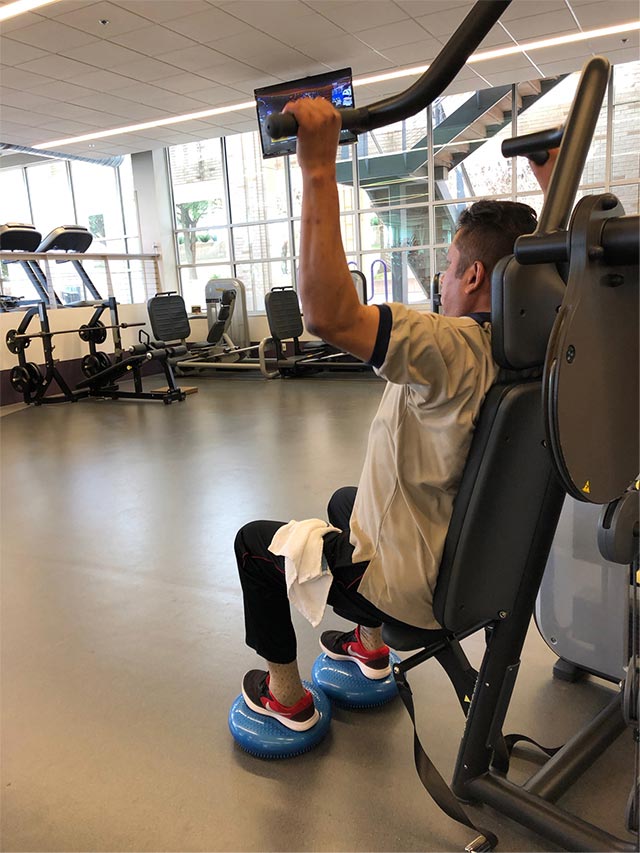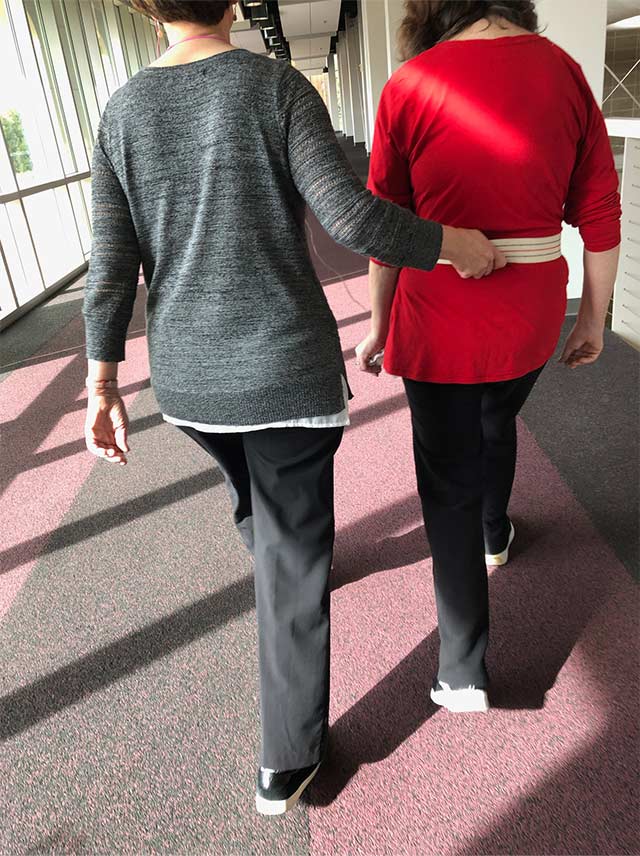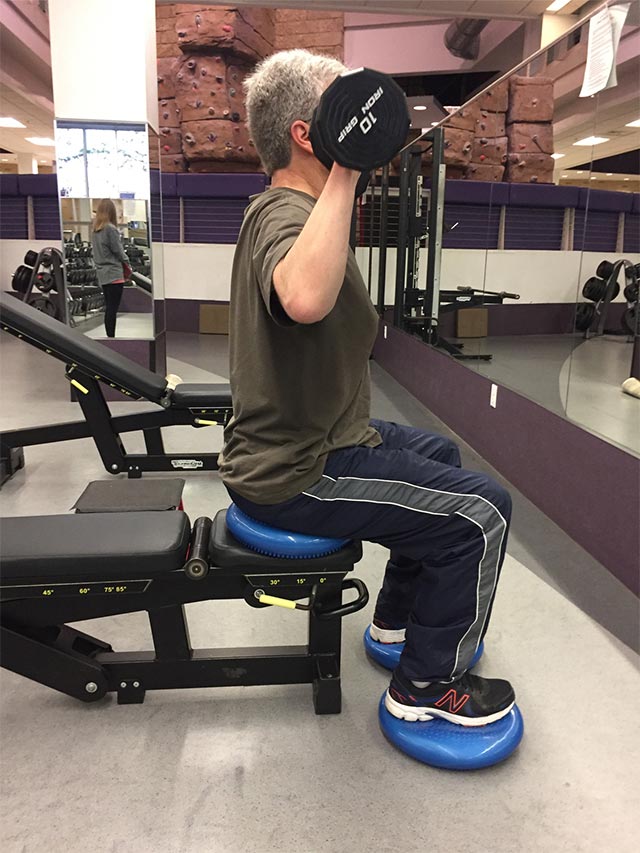Exercise 101: Introducing the FITT Principle
I hope you know about the many benefits of regular exercise, especially for those living with chronic conditions like Parkinson's disease (PD). In case you don't, this information is especially for you.
I have exercised all of my adult life and that exercise has varied over the years. I taught exercise and wellness in several university courses and was once a certified fitness specialist. Then came PD. I knew the fundamentals of exercise and was curious about the best exercise practices to take on this game-changer.
Goals of FITT
The FITT principle is a helpful guide to:
- direct our exercise
- plan for changes as needed during disease progression
- reap the greatest rewards from our exercise efforts
Yes, we can say that any movement is better than no movement but planned exercise can, and should, lead to improved quality of life. It is common in the fitness world to call an exercise plan an individualized exercise prescription (IEP). If you're like me we already have enough prescriptions in our life so I like to use the term “personal exercise plan" (PEP).
Starting your personal exercise plan
How does a PEP begin? Start with medical clearance from your physician and, if possible, meet with a physical therapist and/or certified personal trainer to discuss your fitness goals. A physical therapist may begin with evaluations related to your Parkinson’s stage, fall risk, and strength before writing a therapy plan.
A personal trainer will typically begin with assessing your current fitness level. He or she may evaluate your strength (hand grip, upper body and lower body) and cardiorespiratory function in order to plan a series of personal workouts that build from your current fitness level.
Seek reliable sources of information
There is the possibility that you, for whatever reason, begin to exercise at home or a local gym under your own guidance. If so, seek out reliable guidelines for your age, fitness level, and conditions.
For example, I might choose exrx.net and look at the senior, beginner, and fitness calculator sections to get started. I could also check for reliable exercise information on Parkinson's-specific sites like Davis Phinney Foundation, Michael J. Fox Foundation, and this site.
Start by typing in the keyword "exercise" and this will open some helpful resources. It is important to recognize how your current PD stage will affect your ability to exercise, thus the recommendation to begin with a trained professional if at all possible.
In a perfect world, you would receive exercise guidance from both a physical therapist and a personal trainer with experience working with persons with Parkinson’s. In any case, it is helpful to know about the FITT principle and how it relates to your personal exercise plan.
What is FITT?
Frequency
FITT begins with frequency. How often should you exercise? There’s a general response for adults and an add-on for those with Parkinson’s. It’s also extremely important to take into account whether you’re moving from a sedentary lifestyle to beginning exercise, or from a somewhat active lifestyle to a very active one.
In general, you should perform cardiorespiratory exercise at least 3 times a week. The American College of Sports Medicine or other reliable exercise websites will identify a range of 3-5 times a week. Many people use a simple pedometer or, more often in this day and age, wearable technology like a Fitbit or Apple Watch.
Additionally, some perform resistance training 2-3 days a week. People with PD may want to consider their workout environment, shoes, and assistive devices. Your first goal may be to simply walk more about your house and complete chores that you have found difficult.
Intensity
The I in FITT relates to exercise intensity. To determine intensity in cardio, you can use a variety of tests. First, the talk test - if you can’t converse with an exercise buddy while walking, jogging, etc., then you’re probably working too hard.
Next, heart rate formula - the most basic formula for adults is 220 - your age = X; 50-70 percent of X is your heart rate goal although, again, you must take into account your PD stage and whether you’ve been sedentary or have already been exercising for a while. Finally, the perceived exertion scale - "hard" to "very hard" efforts fall between 5 and 7 on a scale of 1-10.

For resistance training, your intensity, or how heavy the weight or resistance you work with, will be based on several things. Start with the concepts of endurance versus strength. Endurance exercise will work with lighter weights (intensity) for more repetitions (reps) and sets. Strength exercise will work with heavier weights for fewer reps and sets.
Research shows that vigorous exercise may have a neuroprotective effect on persons with Parkinson's. You may or may not be able to exercise with high intensity, especially as you begin.

Time
The first T in FITT is in regard to how much time should be spent on each exercise session. A currently sedentary person may walk, for example, for 5-10 minutes at first and then build to 10 minutes two times a day and finally 10 minutes three times a day.
The next move is to exercise 20 minutes at one time and then 30 minutes. Finally, cardio exercise helps you most when you sustain it 30-60 minutes per day. Instead of using elapsed time during resistance training, we use repetitions and sets. For example, you might use a leg press machine set at 100 pounds ("intensity") for 10 reps and 3 sets (“time”) with a 30-60 second interval between sets.

Type
The final T is for the type of exercise: cardiorespiratory, muscular strength/endurance, and flexibility.
Cardio exercise involves large muscles that can move rhythmically and sustain these movements over time. Muscular fitness exercise calls upon moderate to high intensity movements in resistance to either free weights or machine weights.
Flexibility exercise occurs when you take a movement slowly through its full range of motion, hold for 30-60 seconds, and return to the starting position before repeating that particular stretch a few more times.
Start small and build safely
Your personal exercise plan should not exceed your current fitness level in order to avoid injury and frustration. Start small and build safely. Remember to begin with your physician’s clearance and build a PEP that will work for you. I highly recommend setting at least one exercise goal and recruiting an exercise buddy (accountability partner) to keep you going week after week.
Several cats live in our house and I had been struggling to lift a box of cat litter. Soon after my diagnosis, I began following a regular strength training plan. It became so much easier to lift, carry, and pour a 40-lb box of litter.
There is no guarantee this will happen for everyone, particularly as the disease progresses, but I’ve been very buoyed by the results of my exercise plan. I would love for you to experience a similarly good outcome.
Engage with the community by telling your story, or participating in a forum.

Join the conversation